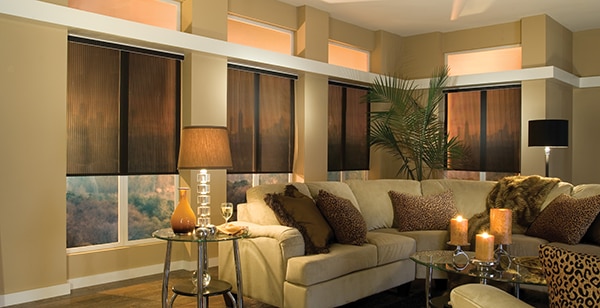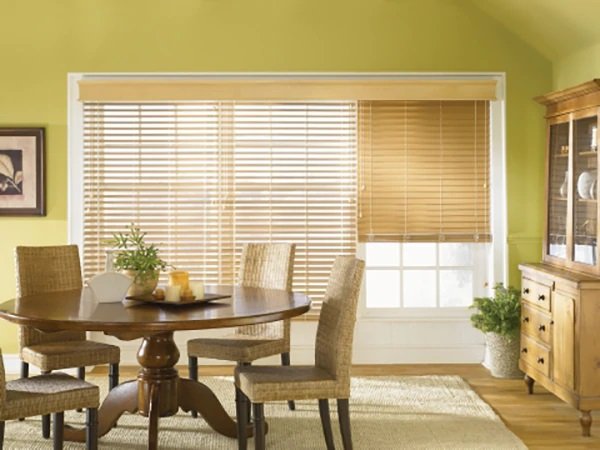What is a headrail? I get this question all the time when people are contemplating the many customizable options that you may choose when looking for new window treatment options. Headrails are essentially the part of the blind that houses the operating system – a.k.a. the mechanisms that make our blinds go up and down. The type of window treatment you select, whether that is wood blinds, roman shades, cellular shades, or shutters, will determine what the headrail will look like.
Headrails also vary depending on how you customize your window treatment to operate, whether that is with motorization, cordless, top down bottom up, or old-fashioned cord loops. When you have two or three large windows in rows, you may opt for a 2-on-1 or 3-on-1 headrail. This just means that the two or three blinds in a row will operate under the same headrail, giving your window treatments a sleeker, continuous look at the top. Headrails can also provide a decorative touch to your windows. You may choose to color coordinate, fabric wrap, or add metallic finishes to certain products. A decorative flair gives your home a finished touch that ties together the entire look of your home.
What is a Headrail?
A headrail is the essential top component of window treatments that serves as both the structural foundation and operational hub for your blinds or shades. Understanding headrails is crucial when selecting window treatments, as they directly impact functionality, aesthetics, and installation requirements.
Core Function and Design
The headrail houses all the critical operating mechanisms that control your window treatment’s movement. This includes lift cords, tilt mechanisms, motor components (for motorized units), and mounting hardware. Think of the headrail as the “brain” of your blind or shade system – it coordinates all the moving parts that allow you to raise, lower, and adjust your window covering.
Headrail Components and Variations
Different window treatment types require specific headrail designs:
- Wood and Faux-Wood Blinds: Feature robust headrails with integrated tilt mechanisms and cord locks, typically measuring 2-3 inches in depth
- Cellular Shades: Utilize compact headrails that accommodate the honeycomb structure while maintaining a low profile
- Roman Shades: Incorporate headrails with ring and cord systems that create the signature fold patterns
- Vertical Blinds: Employ track-style headrails that allow individual vanes to traverse and rotate
- Roller Shades: Use simple tube-style headrails that support the fabric roll mechanism
Operating System Integration
Modern headrails accommodate various operating systems to meet different user preferences and safety requirements:
- Cordless Systems: Utilize spring mechanisms or friction locks for child-safe operation
- Motorized Options: House electric motors, receivers, and battery compartments for smart home integration
- Top-Down/Bottom-Up: Feature dual operating systems allowing independent control of upper and lower sections
- Traditional Cord Loops: Include pulley systems and cord locks for classic operation
Multi-Window Headrail Solutions
For windows positioned side-by-side, headrail systems offer seamless integration options:
- 2-on-1 Headrails: Connect two adjacent window treatments under a single continuous headrail for unified appearance
- 3-on-1 Headrails: Integrate three window treatments, ideal for large picture windows or bay window configurations
- Continuous Headrails: Provide uninterrupted horizontal lines across multiple windows for architectural cohesion
Aesthetic and Decorative Options
Beyond functionality, headrails contribute significantly to your window treatment’s visual impact:
- Color Coordination: Match headrail finishes to blind materials or room décor
- Fabric Wrapping: Coordinate with existing textiles for seamless integration
- Metallic Finishes: Choose from brushed nickel, oil-rubbed bronze, or white for decorative appeal
- Valance Integration: Combine with decorative valances to completely conceal the headrail mechanism


